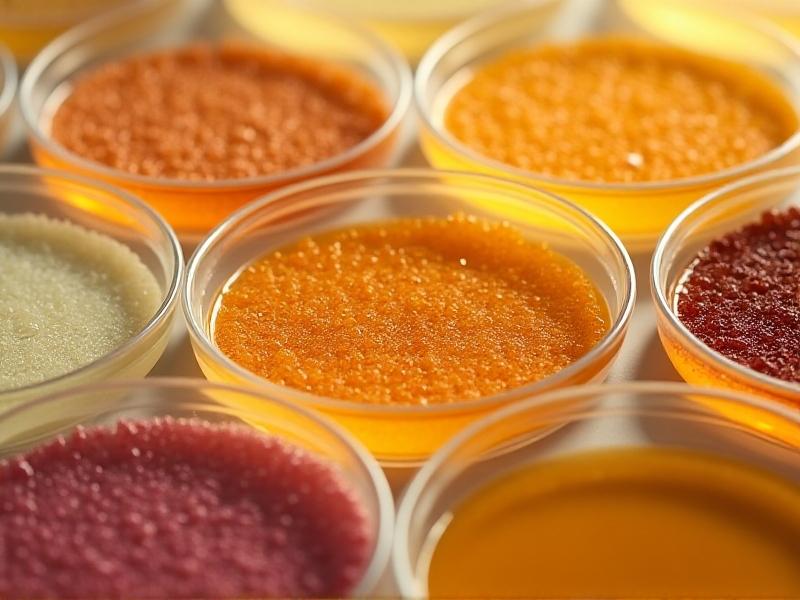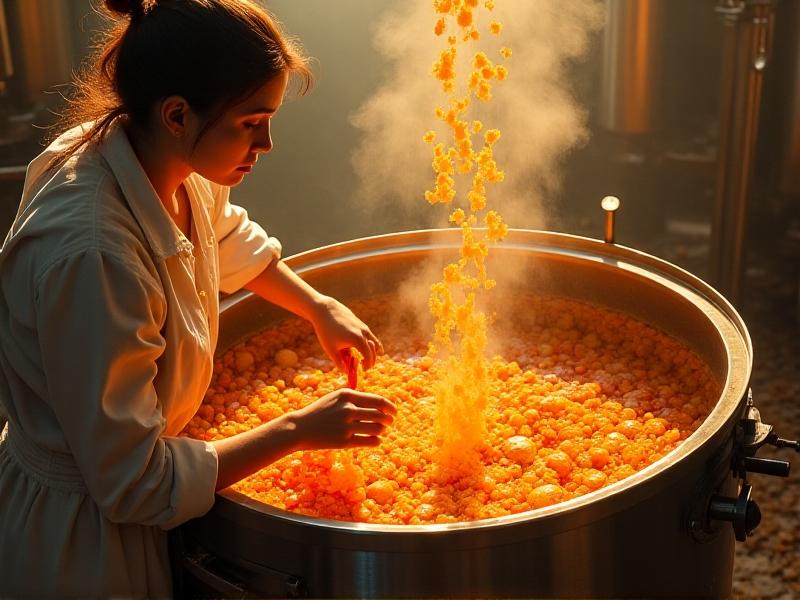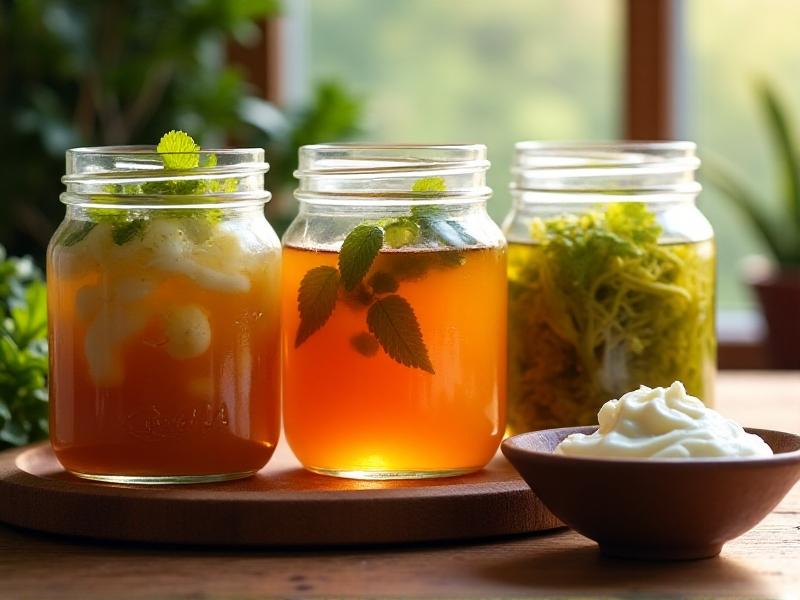Secondary Fermentation Flavor Enhancement
Understanding Secondary Fermentation
Secondary fermentation is a crucial step in the brewing and fermentation process that significantly impacts the flavor profile of the final product. Unlike primary fermentation, where the primary goal is to convert sugars into alcohol, secondary fermentation focuses on refining and enhancing the flavors. This stage allows for the development of complex aromas and tastes, often influenced by the addition of new ingredients or the aging process. Understanding the science behind secondary fermentation can help brewers and fermenters achieve a more nuanced and desirable end product.

The Role of Yeast in Flavor Enhancement
Yeast plays a pivotal role in secondary fermentation, acting as the catalyst for flavor enhancement. Different strains of yeast can produce varying esters, phenols, and other compounds that contribute to the aroma and taste of the beverage. For instance, Belgian yeast strains are known for their spicy and fruity notes, while American strains tend to produce cleaner, more neutral flavors. By carefully selecting the appropriate yeast strain, brewers can tailor the flavor profile to their desired outcome. Additionally, the conditions under which yeast is fermented—such as temperature and oxygen levels—can further influence the flavor development.

Adding Ingredients During Secondary Fermentation
One of the most effective ways to enhance flavor during secondary fermentation is by adding new ingredients. Fruits, spices, herbs, and even oak chips can be introduced to impart unique flavors and aromas. For example, adding citrus peels can introduce a zesty, refreshing note, while vanilla beans can add a smooth, creamy undertone. The timing and method of adding these ingredients are crucial; adding them too early or too late can result in an unbalanced flavor. Experimentation and careful monitoring are key to achieving the desired results.

Aging and Maturation in Secondary Fermentation
Aging is an integral part of secondary fermentation that allows flavors to meld and mature over time. This process can take place in various vessels, such as stainless steel tanks, wooden barrels, or even bottles. The choice of vessel can significantly impact the flavor; for instance, aging in oak barrels can introduce tannins and vanillin, adding depth and complexity. The duration of aging also plays a critical role; too short, and the flavors may not fully develop, too long, and the beverage may become overly oxidized. Patience and precision are essential in this stage.
Monitoring and Controlling Secondary Fermentation
Successful secondary fermentation requires meticulous monitoring and control of various factors. Temperature, pH levels, and oxygen exposure must be carefully managed to ensure optimal conditions for flavor development. Advanced tools such as hydrometers, pH meters, and temperature controllers can aid in this process. Regular sampling and tasting are also essential to track the progress and make necessary adjustments. By maintaining a controlled environment, brewers can achieve a consistent and high-quality product.
Common Challenges in Secondary Fermentation
Despite its benefits, secondary fermentation can present several challenges. Contamination, off-flavors, and stalled fermentation are common issues that can arise. Contamination from wild yeast or bacteria can lead to undesirable flavors, while off-flavors may result from improper temperature control or excessive oxygen exposure. Stalled fermentation, where the yeast becomes inactive, can halt the flavor development process. Understanding these challenges and implementing preventive measures, such as sanitization and proper storage, can help mitigate these risks.
Innovative Techniques in Secondary Fermentation
Innovation in secondary fermentation has led to the development of new techniques that push the boundaries of flavor enhancement. Methods such as dry hopping, where hops are added during or after fermentation, can introduce bold, aromatic notes. Souring techniques, involving the use of lactic acid bacteria, can create tart, complex flavors. Additionally, blending different batches or using mixed fermentation with multiple yeast strains can result in unique and layered flavor profiles. Embracing these innovative approaches can set a product apart in a competitive market.
The Impact of Secondary Fermentation on Different Beverages
Secondary fermentation is not limited to beer; it plays a significant role in the production of various beverages, including wine, cider, and kombucha. In winemaking, secondary fermentation, or malolactic fermentation, converts malic acid to lactic acid, resulting in a smoother, rounder flavor. In cider production, secondary fermentation can enhance the fruitiness and complexity. For kombucha, secondary fermentation with added fruits or herbs can create a fizzy, flavorful drink. Understanding the specific needs and techniques for each beverage can lead to superior results.
Exploring the Art and Science of Secondary Fermentation
Secondary fermentation is both an art and a science, requiring a blend of creativity and technical knowledge. The science provides the foundation, offering insights into the biochemical processes that drive flavor development. The art lies in the brewer's ability to experiment, innovate, and refine these processes to create a unique and memorable product. By embracing both aspects, brewers can master the craft of secondary fermentation and produce beverages that stand out in flavor and quality.







